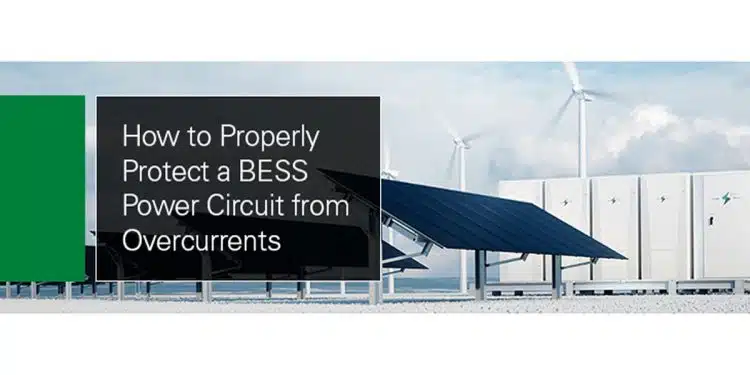Littelfuse, Inc., a diversified, industrial technology manufacturing company empowering a sustainable, connected, and safer world, has published the technical paper, “Fuses for Battery Energy Storage Systems.” The paper addresses how to adequately size fuses for overcurrent protection to maintain the safe and uninterrupted operation of a battery energy storage system (BESS).
It is common for overcurrents to damage the electrical equipment in battery energy storage systems. They may also cause system damage and downtime which can be costly.
The BESS industry is experiencing tremendous growth and this paper provides valuable information regarding sizing fuses for circuit protection to help prevent overcurrent scenarios.
“Given that Littelfuse is the leader in circuit protection, we play a critical role in helping to enable our customers’ energy storage system applications,” stated Immanuel Umenei Littelfuse Industrial Business Senior Global Manager, Renewable Energy. “This circuit protection fuse sizing guide showcases our critical application expertise and helps to close the knowledge gap to ensure BESSs are safe and operational.”
In a battery energy storage system (BESS), the energy in the battery cells is like raindrops that combine to form a brook. Made of the combined energy from cells, these brooks combine to form a river—the battery-module energy. The modules are combined in series to form a rack. The hills’ slope on which these rivers flow down represent the rack. Multiple rivers flowing down similar sloped hills combine to form a sea, like energy from racks in parallel combine to form a “sea” of energy. And whether it be the picturesque open water or your energy investment—all things precious must be protected.
Circuit protection becomes necessary when each of these levels from the cells to the racks form a combination of energy. Fuses are an efficient and effective way to protect a BESS from over-currents. Over-currents not only frequently damage systems, but are also the culprit of downtime, which is detrimental to a company’s bottom line.
The advantages fuses bring to a BESS are immense. Without a need for complex wiring or additional components, fuses are a great way to protect a system simply and cost-effectively.
Fuses can be easily replaced without the accumulation of additional downtime. BESS fuses’ low watt loss prevents energy loss, which efficiently minimizes wasted power from components. Their compact size makes designing high-energy density systems possible. BESS fuses have a dc-breaking capacity of up to 250 kA (or potentially more) at 1500 V dc, which enables the design of a long-duration BESS, but have a low minimum breaking capacity that offers protection for lower fault-current levels. All in all, fuses are a win for a BESS.
Circuit protection must be adequately sized to prevent catastrophic failure. The optimal circuit protection component to use depends on the
- system voltage,
- system nominal current,
- time constant,
- withstand rating of the interconnecting components,
- ambient conditions, and
- location of the component within the system.
This technical paper includes:
- Where circuit protection is important in a BESS
- Reverse coordination: a modified version of selective coordination
- How to size fuses within each of the overcurrent-prone areas within a BESS
- Case studies
This paper discusses the different fault-prone points of a BESS, and how to adequately size the fuse for optimal overcurrent protection.






























